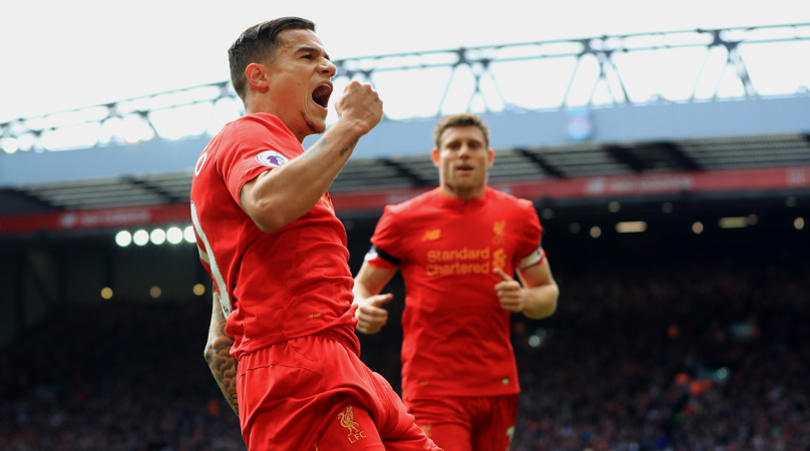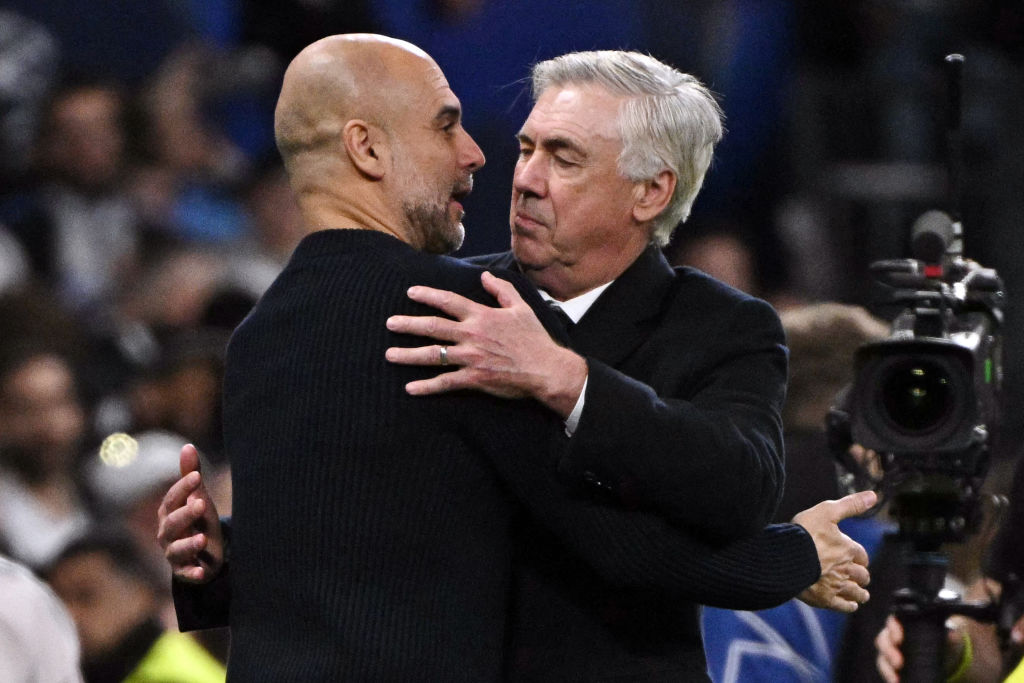How Andy Robertson emerged from the shadows to become Liverpool's secret weapon
The left-back’s rise from the Scottish Third Division has been a remarkable tale of determination and adaptation, writes Jack Lusby of This Is Anfield
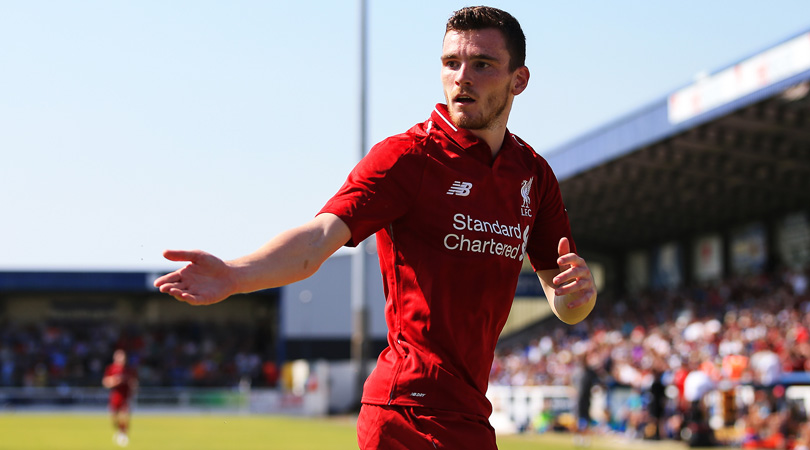
"In fairness, they’re just not very good... But there’s one who can potentially be super, super, super good – and that’s Robertson.”
So went Hatem Ben Arfa’s assessment of the Hull squad of 2014/15. While his own, failed spell at the KCOM Stadium serves as more proof of a career unfulfilled, the mercurial Frenchman was astute in his projection of Andy Robertson’s development.
A player like Ben Arfa – a continental talent whose career has taken in spells with Lyon, Marseille, Newcastle, Nice, PSG and now Rennes – acknowledging the Scot's potential is particularly interesting.
Unlike Ben Arfa, whose spell in the Clairefontaine academy propelled him towards stardom, Robertson endured a rocky rise as a young player. He was released by boyhood club Celtic as a 15-year-old for being too small. But his Parkhead exit only spurred him on, and he operated quietly in the shadows with Queen’s Park and then Dundee United, before securing his £2.85m move to Hull.
From Largs to Liverpool
“Andy’s response was to say, ‘I’ll prove you wrong’. He played in the first warm-up game at Largs and I don’t think he went out of the team again until he left us,” former Queen’s Park manager Gardner Speirs recounted in an interview with the Telegraph last year.
“Andy’s performances meant that we couldn’t leave him out, even though he was so young. You could see his attitude, determination and ability. He was a first pick for the whole [2012/13] season.”
Get FourFourTwo Newsletter
The best features, fun and footballing quizzes, straight to your inbox every week.
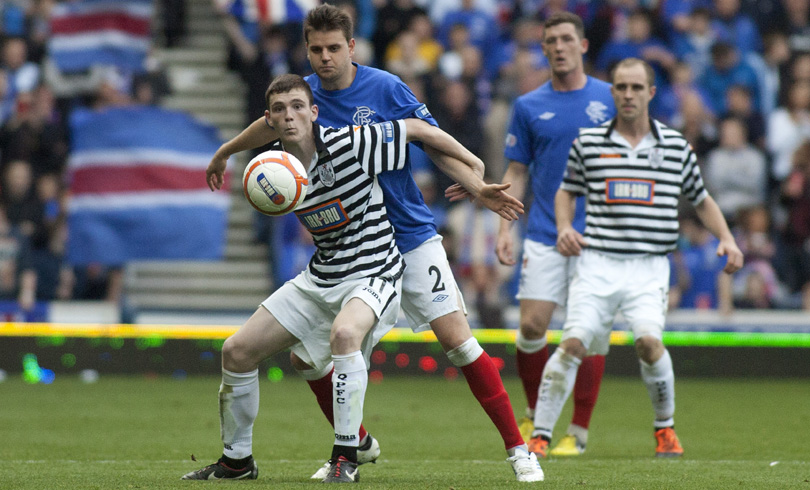
That determination has taken him far. Eventually, to England and the Premier League in 2014, where Jurgen Klopp identified him as a future Liverpool player; an alternative to Ben Chilwell, who spurned the Reds’ advances to sign a new contract with Leicester in 2016.
Robertson, meanwhile, joined Liverpool for just £8m in 2017. He was forced to bide his time at first, which – as he told FourFourTwo magazine in our latest issue – was “a new situation for me and I probably didn’t deal with it well.” Yet the same spirit that fuelled a hungry youngster in Mount Florida, Glasgow, ultimately secured him a starting role. Now, he is one of Klopp’s most important players for myriad reasons.
“It's by continuing to show this attitude and this mentality that he will achieve what he dreams of at the highest level of the game,” the Liverpool manager explained during the initial five-month period where Robertson started just four of a possible 24 games.
“Robbo – and others who have been in this position until now – are as important to what we want to achieve as anyone else in the dressing room. Without them, without their desire and hunger to compete and contribute, we will achieve nothing. With them – and with them recognising their importance and value – we are so strong.”
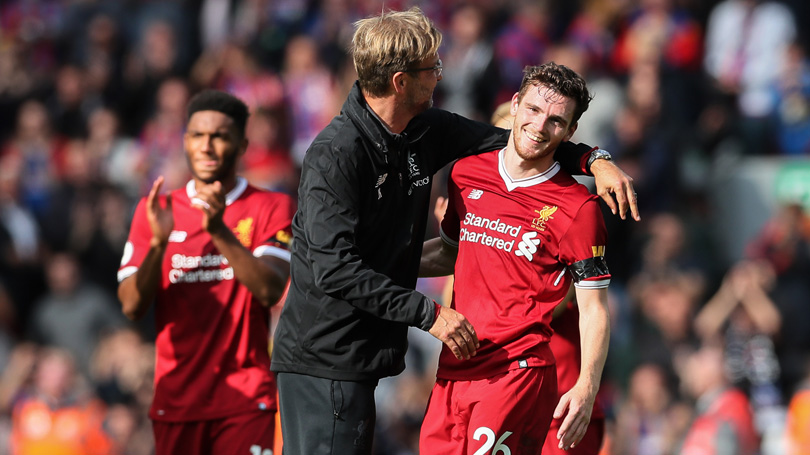
Making his mark
It took until the start of December 2017 for Robertson to stamp his imprint in Klopp’s side, and this slow transition helped him adjust to the demands of the German’s high-intensity system, as well as acclimatise to a group with top-level ambitions. The players he was tasked with supporting were Philippe Coutinho and Sadio Mané, who alternated duties on the left flank before the Brazilian’s move to Barcelona in January.
Initially, Coutinho seemed reluctant to offload the ball to the overlapping Robertson. But then things changed: a standout performance from left-back in the Reds’ 4-0 win at Bournemouth in December 2017 featured the pair intertwining with devastating effect, including a move which resulted in the opening goal for the Liverpool No.10.
Their partnership lasted just three more games. Coutinho’s departure to the Camp Nou, and the subsequent failure to negotiate an early deal for Naby Keita, meant Mané's importance magnified. The Senegalese was able to translate his creativity and dribbling ability into a drifting role from the left, more often than not taking up the role of central playmaker.
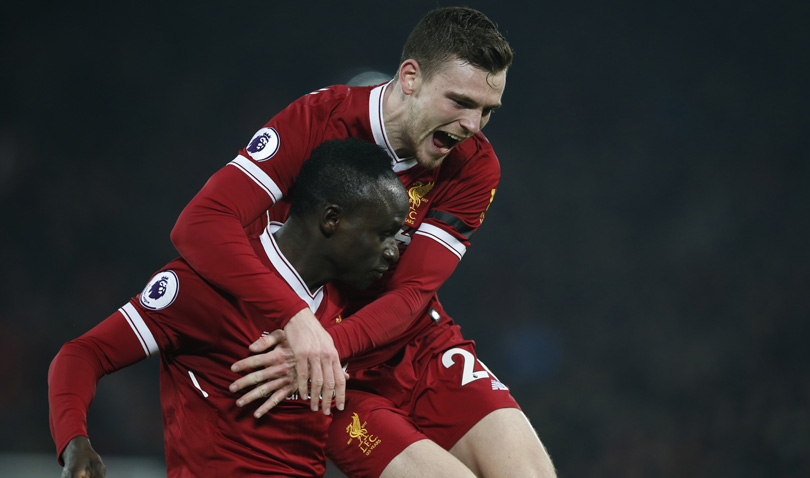
Mané has thrived on his increased importance, and key to this has been Klopp’s belief in the 24-year-old Robertson as an all-rounder. In Liverpool’s front-footed attacking system, the full-backs are crucial – the Scot and Trent Alexander-Arnold typically touch the ball more than any other player.
In Liverpool’s perfect, four-game opening salvo, Robertson has created 10 chances. Only two players – David Silva and Mohamed Salah (both 13) – have been more productive in the Premier League. Liverpool's marauding No.26 finds himself level with Eden Hazard and Sergio Aguero, with the disparity in their reputations another prime example of Robertson’s unassuming rise.
It's come after he registered the most assists for the Reds in pre-season (four), and with two in the league plus another for Scotland, Robertson has already laid on seven goals in 15 games since the summer warm-ups began. Further to this, he's also tallied one ‘hockey assist’ (the pass before an assist).
From deficient to dependable
Beyond the surging runs, pinpoint deliveries and penetrating one-touch passing, Robertson provides Liverpool with a steely defensive presence at left-back, aided by the presence of the imperious Virgil van Dijk. His efforts in defence are markedly improved from his arrival, and Klopp himself has explained that Robertson's previous deficiencies at the back were “why there weren’t 500 clubs out there asking about him”. An appreciation of when to drop and when to push have made the Scot a secret weapon for Liverpool, driving from deep.
The Reds’ suffocating system is reliant on every player contributing, so when they win the ball, Robertson is as important as Keita, Mané, Salah or Roberto Firmino going forward.
Aged just 24, there is a pervading sense that the blossoming full-back can establish himself as a Liverpool staple in years to come – a notion that stems not just from his prominence on the pitch, but also his association with the club’s values off it.
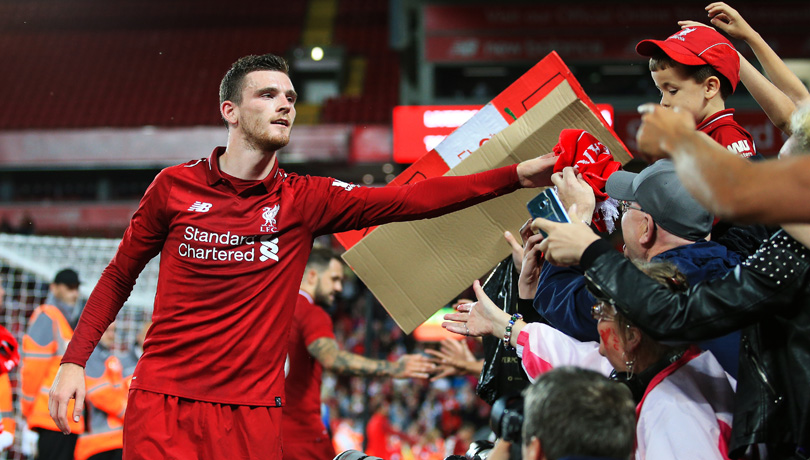
Robertson regularly gives to food banks, and while this is certainly appreciated in a working-class city that’s been ravaged by austerity like Liverpool, it’s nothing new for the player. For his 21st birthday, he asked his friends and family to donate money they might spend on a gift to food banks. “If someone wants to buy me a bottle of vodka I'd rather they donate the £20,” Robertson told the Guardian in May 2018.
The major boost in his profile since has allowed Robertson to bring further awareness to a cause he cares about. In March 2018, for example, he rewarded a young food bank donor, Alfie Radford, with a signed, match-worn Liverpool shirt. Ever humble, however, the full-back ensured Alfie received the jersey of a more glamorous Liverpool player – Roberto Firmino – rather than his own.
Robertson is now Scotland captain – announced last week – and has been tipped by Klopp as a “leader in the future”. He is a throwback to an era Liverpool are striving to revive; and it's no surprise that Tony Barrett, the club’s supporter liaison and a direct line to the Kop, described him as the Reds’ best left-back since Steve Nicol.
Like Robertson, Nicol was adept both in defence and attack, and this consistency at both ends allowed him to become a mainstay for the club throughout its most successful period in the 1980s. It will be a tall order for Robertson to emulate his countryman as Klopp eyes silverware, but there’s little denying that he can match Ben Arfa’s expectations as a “super good” player. He already is.
Jack Lusby writes for This Is Anfield, the independent Liverpool website, and has been a regular FourFourTwo contributor since 2018. He is an expert on Liverpool's youth academy players and has a keen eye on ensuring transfer stories are sourced correctly, which means he is a proficient user of Google Translate.
